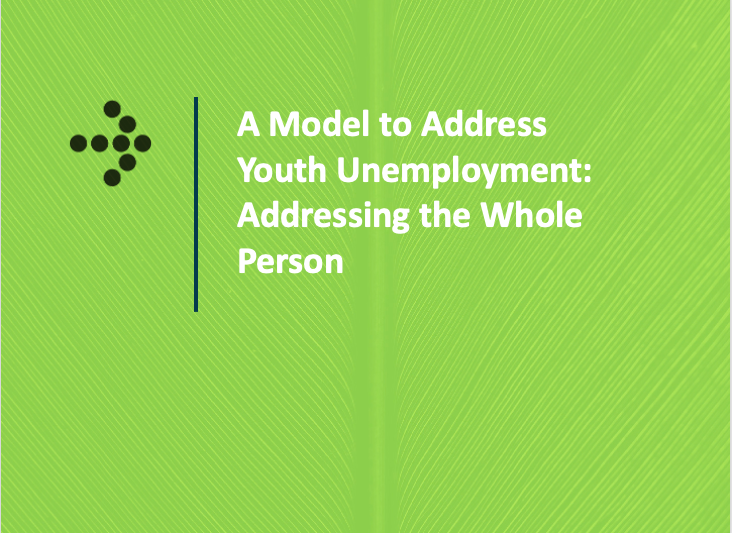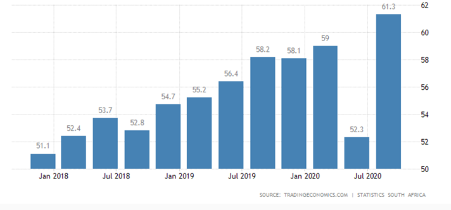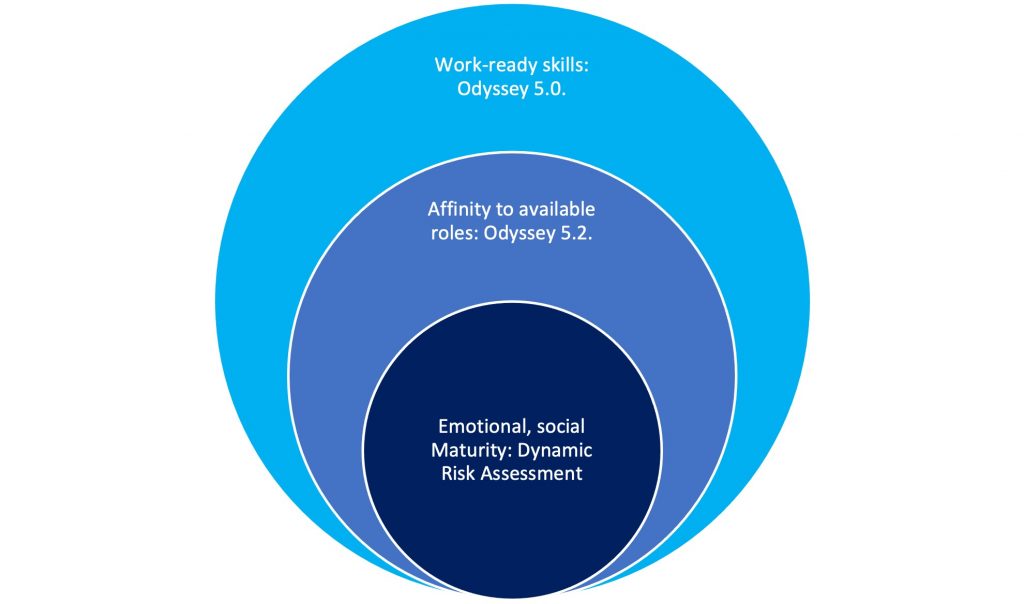A Model to Address Youth Unemployment: Addressing the Whole Person

The South African Human Rights commission has stated that South Africa remains one of the most unequal countries in the world. President Cyril Ramaphosa announced a multi-pronged strategy to tackle inequality in the State of the Nation Address in 2018, which included paying increased attention to youth unemployment. This included job summits, the launch of the YES initiative, tax incentives, and an expanded public works programme, among other initiatives.
Despite these initiatives, youth unemployment has continued to grow over time, with an estimated 61.3% South African youth unemployed in July 2020.

Further, since these government interventions were put into place in 2018, youth unemployment was already rising steadily, even in a pre-Covid world.
The question is, why, with so much focus, and so many interventions already in place, is it so difficult for young South Africans to enter the labour market?
Some clues can be found in a paper written by Lauren Graham (Centre for Social Development in Africa, University of Johannesburg) and Cecil Mlatsheni (Southern Africa Labour and Development Research Unit, University of Cape Town), in 2015.
Skills and Qualification Gaps:
In this paper, they state that the South African labour market tends to focus on a higher skilled workforce, meaning that labour market absorption is highest for people with a post-secondary qualification.
Graham and Mlatsheni go on to state that this demand for higher-skilled labour stands in strong contrast to the reality of the majority of young people in South Africa. Many enter the labour force with minimal skills due to the failures of the basic and post-secondary education systems, while employers are demanding higher benchmarks (such as a matric certificate) even for unskilled positions and apply additional selection criteria such as references from current employees and previous work experience.
This means that young people who have not managed to attain this type of qualification, for whatever reason, are likely to struggle to secure employment. I believe that the fourth industrial revolution is only going to exacerbate this problem in the future.
Community influences
Apart from the labour market structure, it is also necessary to consider community, household and personal factors that drive youth unemployment. These include availability of job opportunities in the community (and thus, cost of transport to seek work), availability of WiFi and internet cafés to apply online, and the availability of social networks to assist in a job search. Other potential challenges include the exposure that young South Africans have to the different type of career options available in the market, and exposure to role-models that they can look up to and try emulate.
Here’s a telling quote from the paper:
Youth from poorer households, however, face uncertainty as they exit the education and social grant systems. Inadequate access to social and financial assets and a lack of relevant skills, support systems, work experience and employment opportunities make it particularly difficult for poor youth to navigate the transition from school to work, which in turn increases the risk for chronic unemployment and poverty for both young people themselves, and their children.
This all leads to a multitude of challenges that young South Africans face, even if the environment offered adequate job opportunities.
While the structural challenges are complex and will require collaboration between a range of stakeholders, including government, to solve (over many years), there are ways to help the youth of today find and secure employment.
One solution is to utilise robust, scientific methods to help companies, colleges and employers look beyond a candidate’s academic background (which can be flawed on so many levels), to identify true potential for employment, as well as to assist candidates close the skill gap and become more “work ready” in a targeted fashion.
Odyssey Talent Management has developed three modules of solutions that can be used for just this purpose, as depicted in the table below:

Module 1: Work Readiness Skills
Odyssey uses an online, gamified assessment process to measure a set of scientifically derived work-readiness skills. The results of this process can be used to sift through large volumes of candidates, and to assist employers identify and hire those who demonstrate real potential to successfully transition into the world of work, whether this be in bursaries, learnerships, graduate programmes or general entry level roles. More than that however, the results can be shared with candidates in a developmental nature, to help those who have clear gaps in their skills profiles identify the key skills they need to improve on, so that they can become more employable.
Module 2: Affinity to available roles
The second module of Odyssey utilises two behavioural tools from our sister company, Evalex. These tools provide a strong indication of the candidates’ unique styles and work interests, that can be used to assist organisations better match the candidates to roles that they will be passionate about, and to activities that will help them thrive. If done correctly, the results that emanate out of this module can also be used to assist candidates understand what sort of jobs they are most interested in, which can help them gain a better understanding of the best options available to them in the market.
Module 3: Emotional and Social Maturity
The third module of Odyssey utilises a powerful assessment developed by our partner Astra Constantine. This is an assessment that assesses the emotional-, maturity-, personality- and values-based risk that candidates currently display. It provides a powerful diagnostic of the innate preferences that candidates have that could cause them to make the wrong decision at work, to rebel, and to get involved in other forms of deviant behaviour.
If used correctly, these results can assist employers predict which candidates are likely to question or even break rules, or which may suffer from other forms of workplace immaturity. The results can also assist candidates develop a deeper understanding of what they need to focus on, to become more reliable and effective employees.
In summary, while the youth unemployment challenge is a complex one that will take many generations and multiple stakeholders to address, solutions such as ours can go a long way in both identifying hidden talent, and assisting the unemployed youth in our country to identify targeted solutions that can fast track their ability to become “work ready”.